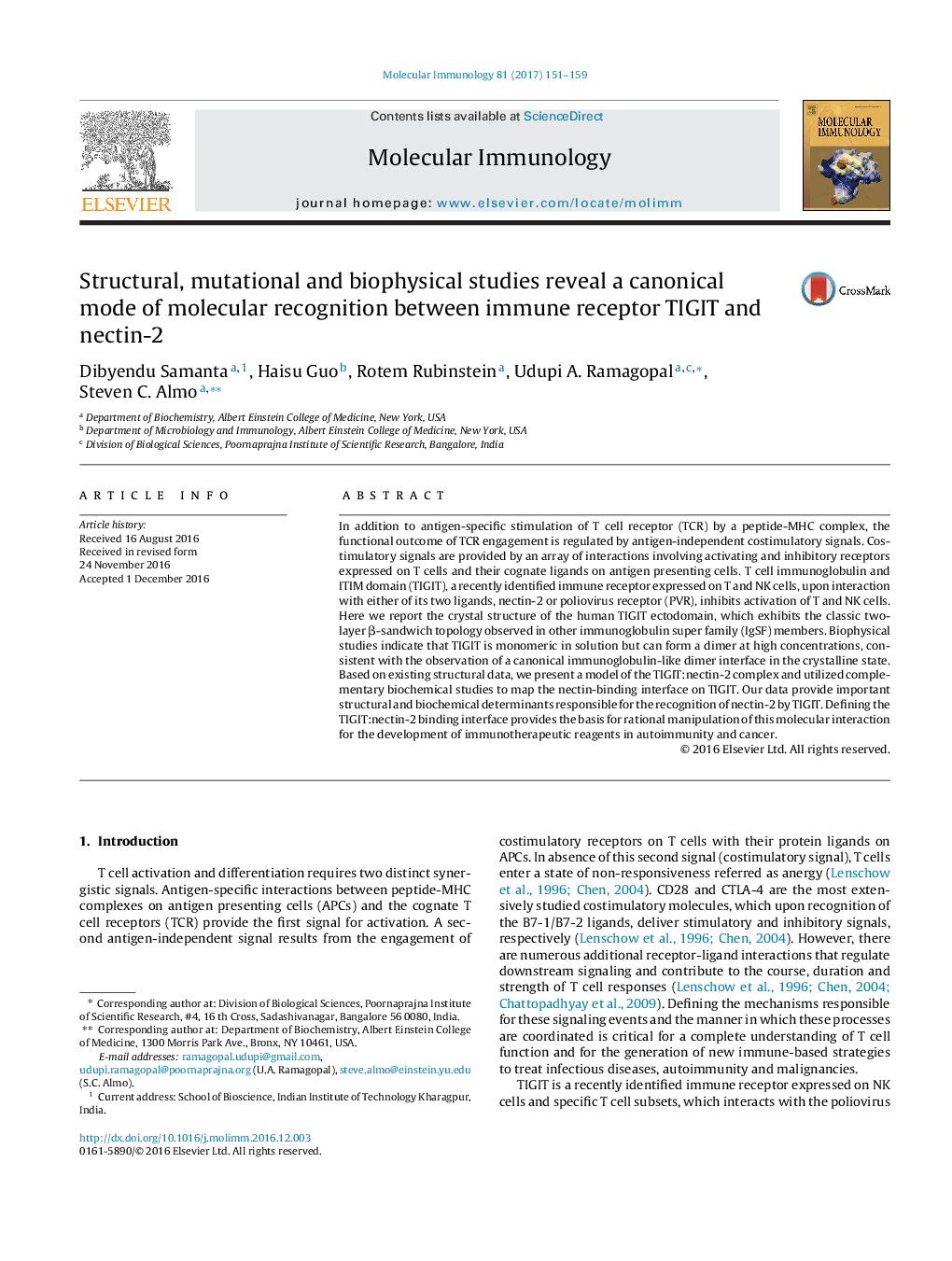| Article ID | Journal | Published Year | Pages | File Type |
|---|---|---|---|---|
| 5592084 | Molecular Immunology | 2017 | 9 Pages |
Abstract
In addition to antigen-specific stimulation of T cell receptor (TCR) by a peptide-MHC complex, the functional outcome of TCR engagement is regulated by antigen-independent costimulatory signals. Costimulatory signals are provided by an array of interactions involving activating and inhibitory receptors expressed on T cells and their cognate ligands on antigen presenting cells. T cell immunoglobulin and ITIM domain (TIGIT), a recently identified immune receptor expressed on T and NK cells, upon interaction with either of its two ligands, nectin-2 or poliovirus receptor (PVR), inhibits activation of T and NK cells. Here we report the crystal structure of the human TIGIT ectodomain, which exhibits the classic two-layer β-sandwich topology observed in other immunoglobulin super family (IgSF) members. Biophysical studies indicate that TIGIT is monomeric in solution but can form a dimer at high concentrations, consistent with the observation of a canonical immunoglobulin-like dimer interface in the crystalline state. Based on existing structural data, we present a model of the TIGIT:nectin-2 complex and utilized complementary biochemical studies to map the nectin-binding interface on TIGIT. Our data provide important structural and biochemical determinants responsible for the recognition of nectin-2 by TIGIT. Defining the TIGIT:nectin-2 binding interface provides the basis for rational manipulation of this molecular interaction for the development of immunotherapeutic reagents in autoimmunity and cancer.
Related Topics
Life Sciences
Biochemistry, Genetics and Molecular Biology
Molecular Biology
Authors
Dibyendu Samanta, Haisu Guo, Rotem Rubinstein, Udupi A. Ramagopal, Steven C. Almo,
